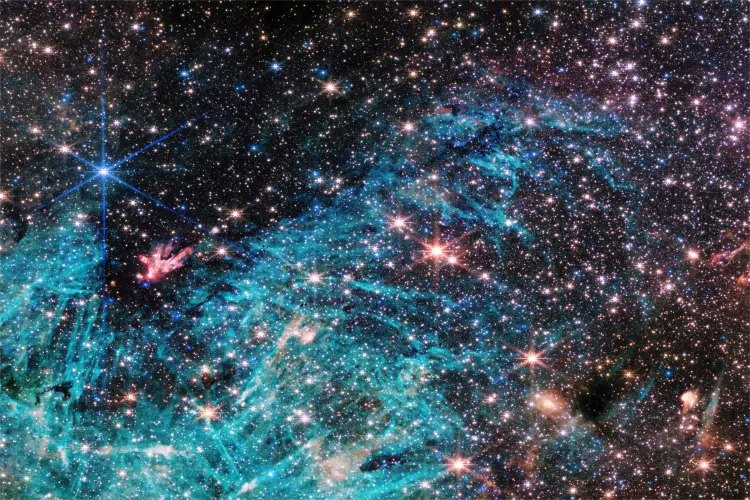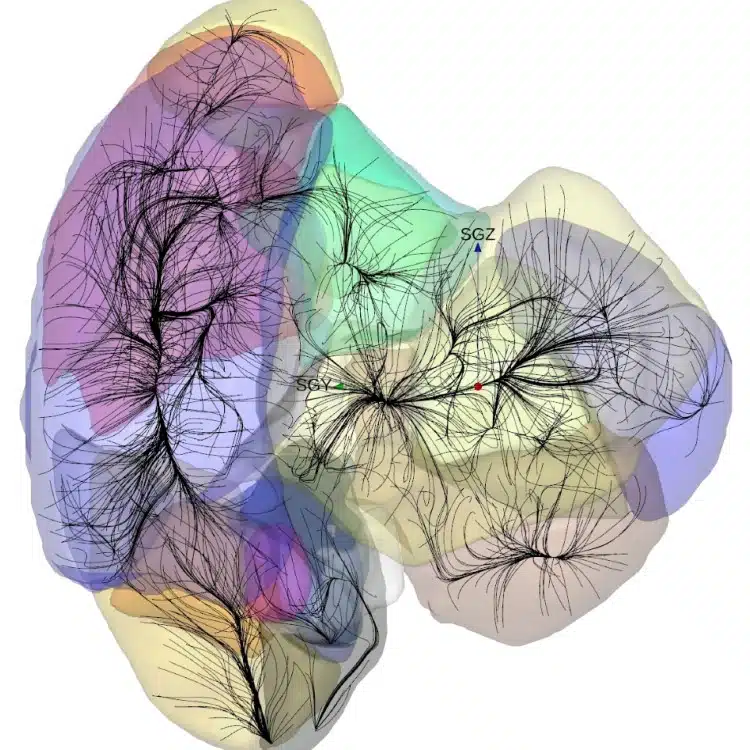
The NIRCam (Near-Infrared Camera) instrument on NASA’s James Webb Space Telescope’s reveals a portion of the Milky Way. (Photo: NASA, ESA, CSA, STScI, and S. Crowe – University of Virginia)
It’s common knowledge that our planet is part of the Milky Way, and that our galaxy is just a small part of the universe. But an international team of researchers guided by astronomers from the University of Hawaii Institute for Astronomy is making us rethink just how large that universe may be.
After studying the movements of 56,000 galaxies, they’ve determined that our neighborhood is much larger than we originally thought. This team, called Cosmicflows, already determined 10 years ago that the Milky Way is situated in a basin called Laniākea. This massive basin, which means “immense heaven” in Hawaiian, stretches 500 million light-years across. However, the new research shows that there is a strong possibility that we are located in a much larger structure that could be up to 10 times bigger.
They believe that the Milky Way is centered on something called the Shapley concentration, a region with an incredible amount of mass and gravitational pull.
“Our universe is like a giant web, with galaxies lying along filaments and clustering at nodes where gravitational forces pull them together,” shares University of Hawaii astronomer R. Brent Tully, one of the study’s lead researchers. “Just as water flows within watersheds, galaxies flow within cosmic basins of attraction. The discovery of these larger basins could fundamentally change our understanding of cosmic structure.”
If the Milky Way is really located inside this much larger structure, it completely changes the current models that astronomers use to trace the development of our universe 13 billion years ago.
“This discovery presents a challenge: our cosmic surveys may not yet be large enough to map the full extent of these immense basins,” explains University of Hawaii astronomer and co-author Ehsan Kourkchi. “We are still gazing through giant eyes, but even these eyes may not be big enough to capture the full picture of our universe.”
But just how can astronomers determine whether or not these enormous structures, called basins of attractions, exist? They look at the motions of galaxies. Any galaxy caught between two large basins will be pulled into a gravitational tug-of-war that will greatly impact its movements. The team determined the location of these superstructures by evaluating the velocity of neighboring galaxies.
As they continue on their journey to map the cosmos, they hope to demonstrate that our universe is more expansive and interconnected than we could ever imagine.
Astronomers have been mapping galaxies in our universe and have discovered that the cosmos might be much bigger than we realize.

Galaxy motions converge into colored basins of attraction. The Milky Way is shown as the red dot. (Photo: University of Hawaii)
h/t: [IFL Science]
Related Articles:
Scientists Discover Possible Ocean of Water Beneath Mars’ Surface
Scientists Discover New Evidence That a Magma Ocean Once Covered the Moon
Detailed Milky Way Map Shows Hidden Parts of Our Galaxy
Earth Is Temporarily Getting a “Mini-Moon” That Will Orbit Our Planet for the Next Two Months
